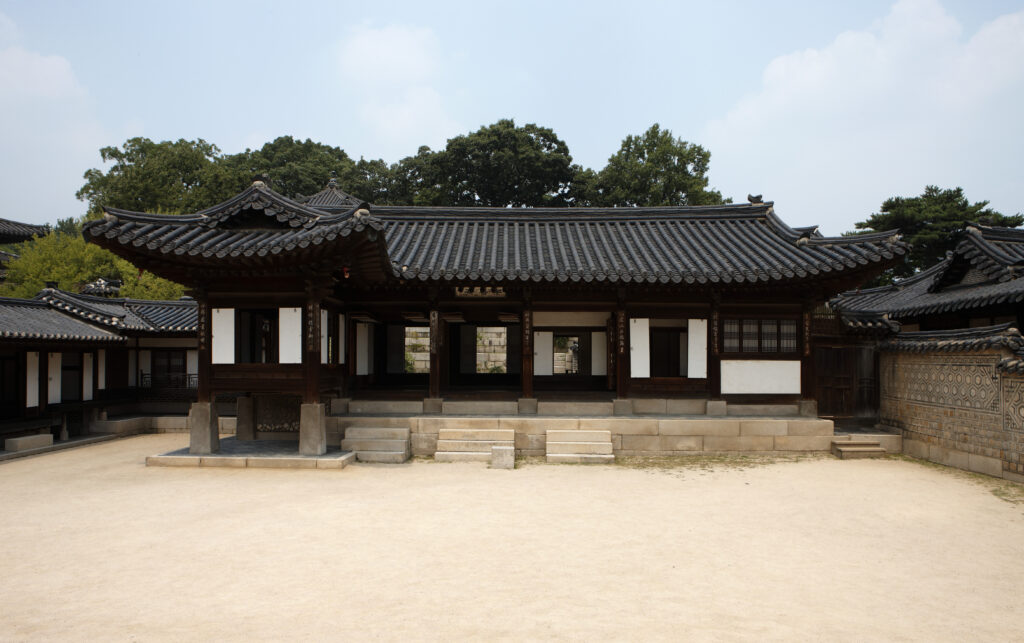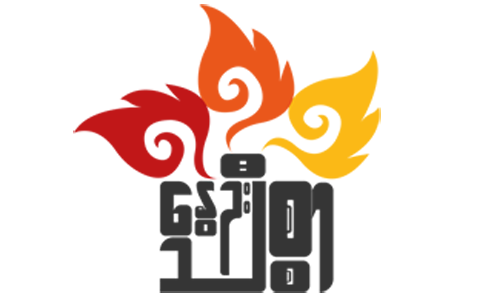The Changdeokgung Palace is one of the most well-preserved royal palaces from the Joseon Dynasty and one of the most beautiful palaces among Seoul’s five main palaces.
It was designated as a UNESCO World Heritage in 1997 and regarded as a masterpiece of Korean palace architecture in harmony with nature and the overall construction highlights the natural settings.
Kings and their ministers discussed state affairs at Changdeokgung Palace and residence of the royal family. It was built in 1405 by King Taejong, the third ruler of Joseon and the first palace to be rebuilt in 1610 after the Japanese invasion in 1592.
Things to See in Changdeokgung Palace
- Donhwamun Gate (돈화문)
- Geumcheongyo Bridge (금청요)
- Injeongjeon(인정전)
- Seonjeongjeon (선정전)
- Huijeongdang (휘정당)
- Daejojeon (대조전)
- Nakseonjae (낙선재)
Donhwamun Gate (돈화문)
It is the largest and imposing entrance gate amongst the other Seoul’s main palaces.
It was constructed in May, 1412, the 12th year of the reign of King Taejong and burned down in Japanese Invasion of 1592. The gate was rebuilt together with Changdeokgung Palace in the 1st year of the reign of King Gwanghaegun (1609).
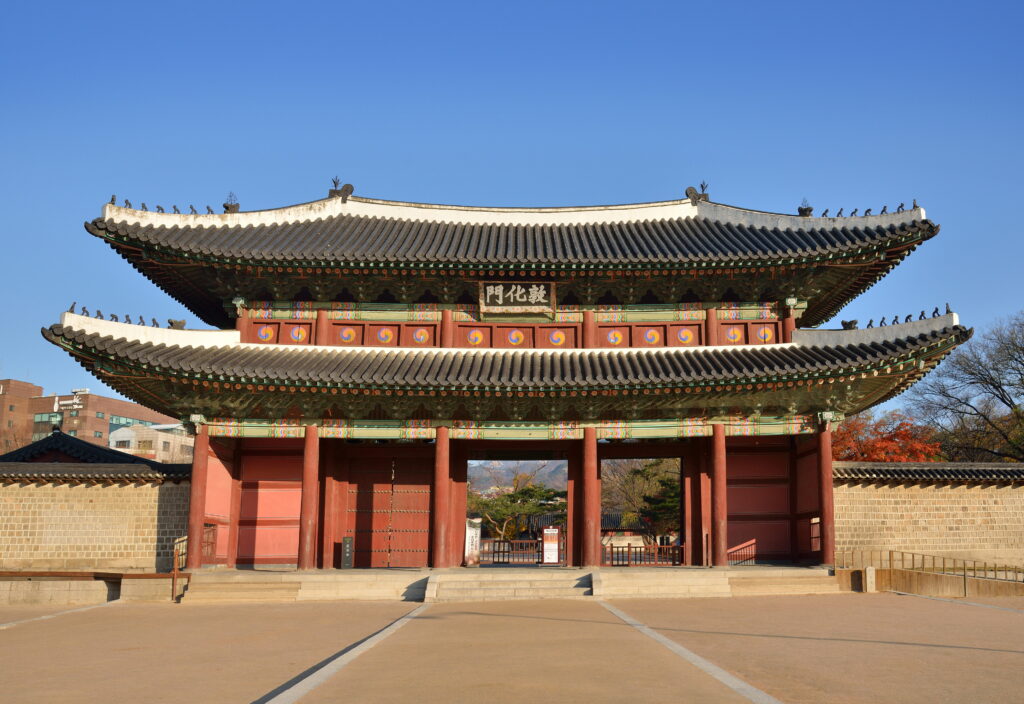
Geumcheongyo Bridge (금청요)
It is the oldest structure in the palace complex dating back to 1414. It have various symbols and carvings. On the south side of the bridge, you can see a stone statue of a legendary creature that is neither a tiger nor a lion, and has scales like a fish on its body. On the other side, there is a stone statue of a turtle which represents Hyeonmu.
For a long time, there has been a belief in East Asia that the fourth cardinal directions had guardians. The east had the blue dragon, the west the white tiger, the south the red phoenix, the north the black turtle, and the center had the yellow dragon. The black turtle guards the north, and originally had the image of a turtle’s body with a snake’s head.
The bridge has guardian animals carved on its side and is considered one of the oldest bridges in Seoul.
You can get more details from here
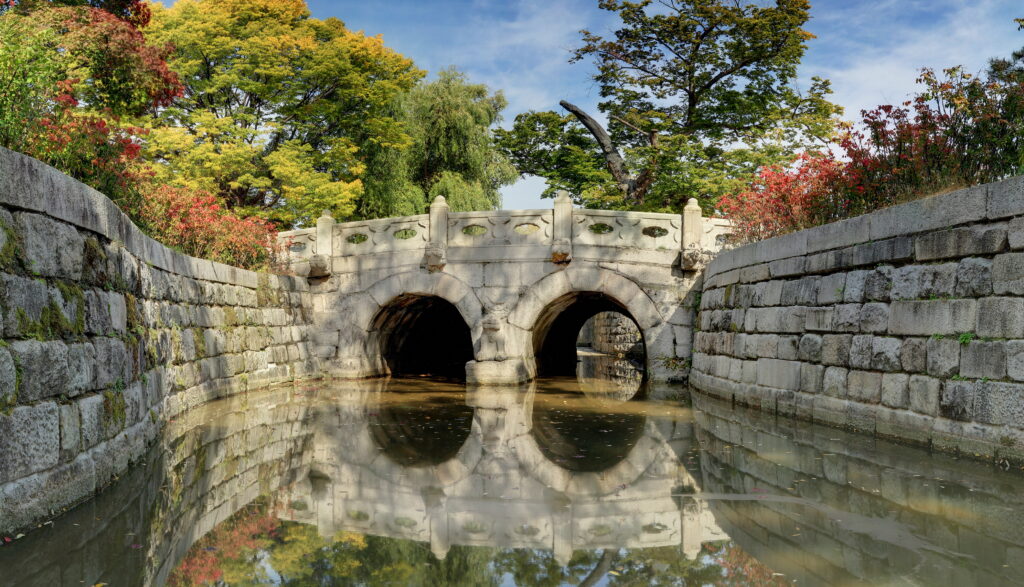
Injeongjeon Hall (인정전)
Injeongjeon Hall which is used by king and officials to conduct state affairs, held national ceremonies and meet foreign officials. And it is main hall in the Changdeokgung Palace.
It was equipped with various decorations that symbolized the formality and diplomacy of the palace in the Joseon Dynasty.
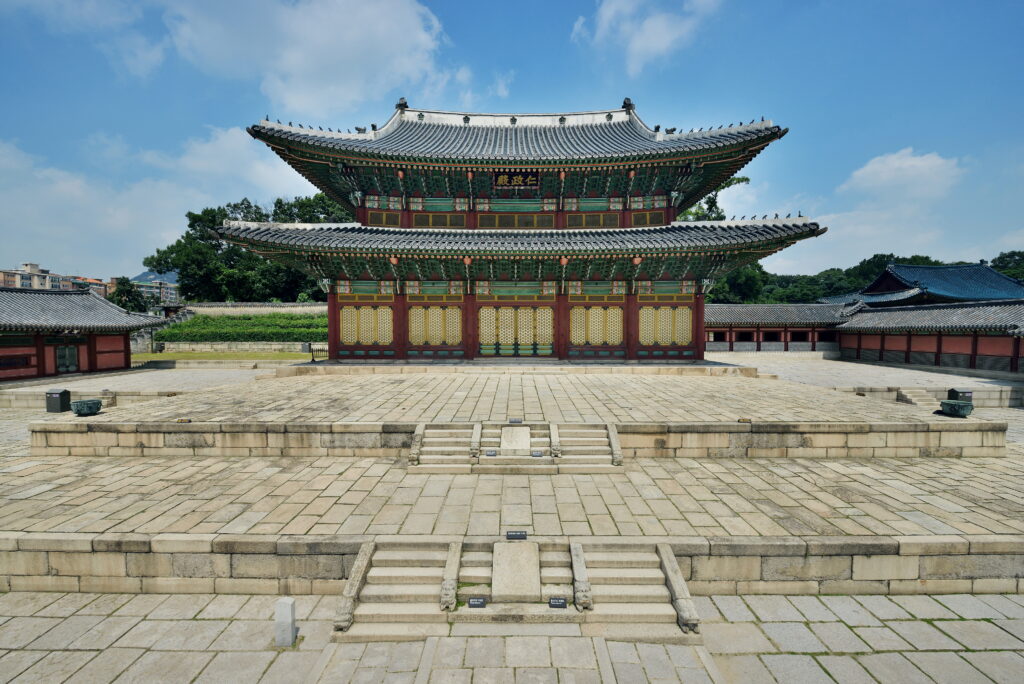
Seonjeongjeon (선정전)
Only blue-roofed building in Changdeokgung Palace remained. Two kings once wished to use blue tiles for palace roofs. The blue roof tiles were made of Arabic blue dye and Chinese techniques were used to produce them.
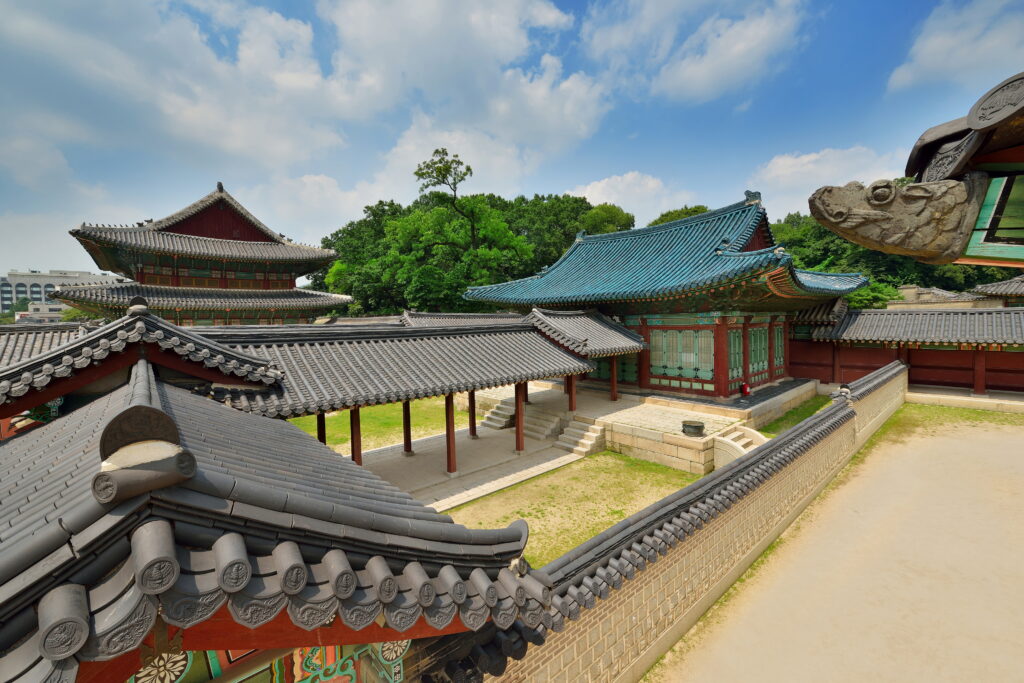
Huijeongdang (휘정당)
Huijeongdang was originally used as the king’s sleeping quarters and was later used by the king as an office and reception hall. In 1496, a palace building named Sumundang was destroyed, rebuilt, and renamed Huijeongdang. The buildiing retains a traditional Korean exterior and interior is westernized.

Daejojeon (대조전)
Daejojeon was the main building of the queen’s residence and the hall had been destroyed by fires multiple times since then. The current structure is the one rebuilt in 1920.
The center bedroom is surrounded by small-sized rooms for court ladies to attend to the king and the queen.

Nakseonjae (낙선재)
Located inside Changdeokgung Palace, Nakseonjae Hall is a one-storey structure built in ikgong style. The hall was constructed in 1846 (12th year of King Heonjong’s reign) and it is collectively called Nakseonjae together with the adjacent Seokbokheon Hall and Sugangjae Hall.
It was built in 1847 as a library and a detached house during the reign of King Heonjong (1827-1849), the 24th king of Joseon. It was later used as a residence for bereaved queens. The last Joseon royal family members, like King Yeongchin, or Yi Eun (1897-1970), the last crown prince of the Joseon line, and his consort Yi Bangja, or Princess Bangja (1901-1989), spent their later years residing in the Nakseonjae.
